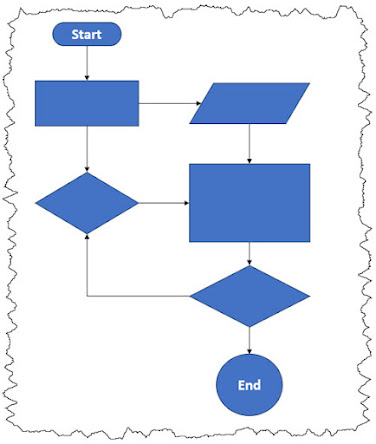Algorithm
An algorithm is a set of steps or instructions or procedures or tasks for solving a problem or accomplishing some goal or objective. A set of steps in an algorithm has a sequence that follows some sort of logical order.
Algorithms are good for explaining, understanding, directing, managing. By breaking down a much larger problem down into smaller, manageable steps you can better understand the problem and create an easier to understand systematic approach to solving that problem or achieving that goal or objective.
An algorithm can be implemented in two different ways: (a) write software code called imperative programming, (b) write declarative rules and use a rules engine (a.k.a. reasoner, semantic reasoner, reasoning engine, business rules engine) to process the declarative rules.
Understanding the difference between imperative and declarative is important. You can understand the difference between imperative and declarative by, say, thinking of how a self driving car might work. There are perhaps two approaches to giving instructions to a self driving car to, say, get to the airport:
- Using an imperative approach you're telling the car "Turn right at the next light, then go straight for two miles, then turn left..." You're giving step-by-step instructions to get from where you are to the airport.
- Using a declarative approach you're telling the car "Take me to the airport." The car figures out the best route, handles the turns, and gets you there.
In an article, An economy of algorithms, R. Martin Chavez, Chief Financial Officer at Goldman Sachs, spoke about how the financial giant has evolved in his decades. In that article he said, "In 2000, we had 600 humans making markets in U.S. stocks, today, we have two people and a lot of software.”
The global economy is increasingly a digital economy driven by algorithms. This shift from analog to digital or algorithmic economy has some distinct implications. In terms of business and compliance reporting, this shift is referred to using different terms by different organizations. For example,
- MIT refers to this as the need for "Algorithmic Business Thinking"
- Carnegie Mellon University refers to this as "Computational Thinking"
- Harvard University refers to this as "Regulation, the Internet Way"
- Vanderbilt University refers to this as "Regulation 2.0"
- The Data Coalition calls this "Smart regulation"
- Tim O’Reilly Founder and CEO O'Reilly Media Inc. calls it "Algorithmic regulation"
- Deloitte refers to this as “The Finance Factory” and "Digital Finance"
- Robert Kugel of Ventana Research calls it “Digital Finance”
- The government of Norway calls this “Nordic Smart Government and Business”
Additional Information:




Comments
Post a Comment